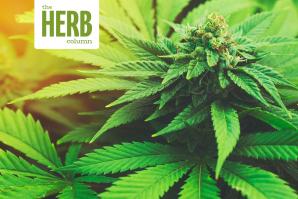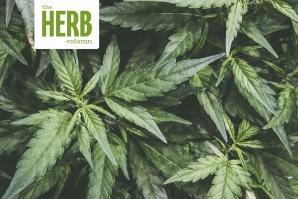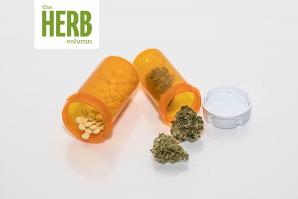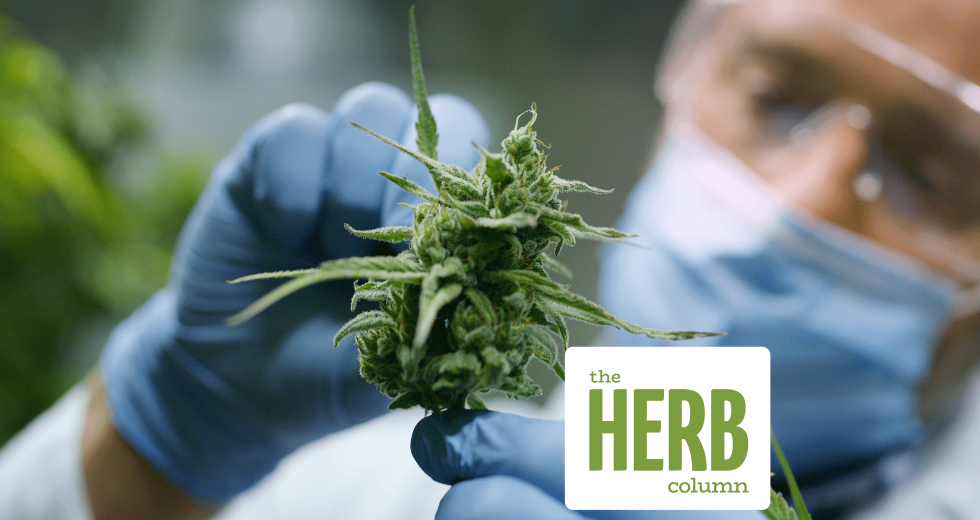A sneaky viroid has been spreading invisibly for months at a time in cannabis plants across the country, decimating crops right as they’re about to flower. The so-called hop latent viroid is now the “biggest concern for cannabis growers worldwide,” according to a recent scientific paper.
Since HLV was first documented at a farm in Santa Barbara in 2019, one cannabis breeder reported in 2021 that 90% of cannabis farms in California had been infected, amounting to approximately $4 billion in annual losses for the cannabis industry. Harvest season for California-grown cannabis is usually during the month of October.
Dr. Zamia Punja, a plant pathology professor at Simon Fraser University in British Columbia who has been tracking the viroid’s spread, says HLV has now been identified in every U.S. state that’s tested for it. The hotbed for HLV, which Punja calls “the COVID of the plant world,” is in Canada and the U.S., but it’s also been identified in Spain. Punja anticipates that increased testing will show the viroid has spread much farther than researchers have documented to date.
HLV spreads most effectively through infected clones and cuttings in low light and cool temperatures. In addition to the plant materials (cuttings, broken off leaves, etc.), sap and water can transmit the viroid through direct contact with a damaged plant. Symptoms ranging from reduced root development and stunted growth to a substantial decrease in cannabinoid production are the most visible when cannabis plants are about to flower, even if they were infected several months prior.
“Plants are pretty stressed when they’re about to flower. They’re pushing all of their energy into the flower, and that seems to bring on the symptoms,” Punja says. “You can have a perfectly great looking plant, with nothing for years, then whether it’s from a recent or longer term infection, as the plant goes into stress it gets more symptomatic.”
The viroid impacts some cannabis strains and genotypes differently. For growers looking to select strains that have been most resistant to HLV, Punja recommends consulting with labs like TUMI Genomics, a cannabis research and testing company based in Colorado.
Since HLV has only genetically evolved to infect plants, there have been no documented health impacts of ingesting infected cannabis, according to Punja. By comparison, “You’d never expect the COVID virus to evolve from monkeys to humans and then go to plants,” Punja says.
Solutions for growers
Experts recommend testing those mother plants and clones at an accredited lab. If a plant is infected, get rid of it, because the viroid is not going to go away once it’s established in the mother plant.
Beware of false negatives. Levels may be so low in the original plant that tests come back negative.
For younger plants, it’s especially important to test the roots. Fortunately, the chances of root infection are much lower than they would be if the viroid is introduced through a stem cutting, since it’s harder for it to find its way from the root to the main stem.
HLV can spread from one plant to another through drip systems. For treating contaminated water, try chlorine or hydrochloric acid. Heating the water up doesn’t work.
For cleaning surfaces and tools, bleach and Virkon have been identified as the most consistent products for minimizing HLV spread, according to a TUMI Genomics literature review that screened 53 products. Other products like UV light and hydrochloric acid may work, but they’re not as proven, says Punja.
Sourcing plant genetics (seeds, immature plants and clones) from commercial nurseries may increase risk of introducing HLV to their crop, according to Mark Bolger, a cannabis grower in Calaveras County.
Two years ago, Bolger sent his whole genetic catalog to a lab to be tested for HLV. Results came back negative, which Bolger attributes to keeping plant breeding in-house, as opposed to sourcing plant genetics from nurseries that may be carrying the viroid or other pestilence like root aphids and mites.
“(HLV) is not personally affecting us, but it’s one of the main reasons we don’t source outside genetics,” Bolger says. “We are an outdoor farm, so we have to deal with pestilence, but we cut down on the chance by not sourcing from outside.”
Future research
Punja says the most productive area of research will be finding mechanisms that prevent spread in various genotypes.
Solutions for curbing HLV have mostly been industry-led to date, since cannabis research and associated government interventions are especially constrained in the U.S., given the plant’s federally listed Schedule 1 substance status. A certified, government-sponsored program, similar to Canada’s potato certification program, could be beneficial in slowing the spread of HLV, but it likely wouldn’t be well-received by growers who are already facing stringent regulations, Punja says.
“Viroids and diseases come and go,” says Punja. “We’ll make it, we just need more time for research. We need to work together and share information, and that’s starting to happen now.”
Stay up to date on business in the Capital Region: Subscribe to the Comstock’s newsletter today.
Recommended For You

The Herb Column: High Hopes in El Dorado County
The passage of five ballot measures in 2018 could lead to a thriving legal marijuana industry
Many local leaders and members of the commercial cannabis community are still optimistic about the November 2018 passage of five ballot measures in El Dorado County that lay the groundwork for a fully legalized and regulated cannabis industry.

The Herb Column: Still Unbanked, Cannabis Enterprises Struggle
Federal law deters banks from serving legal cannabis businesses
Eleven months after recreational marijuana use became legal in California and six years on from legalization in Colorado and Washington state, legal pot growers and dealers still can’t use banks the same way other businesses can.

The Herb Column: A ‘Heart-Centered’ Approach
The CEO of a Sacramento cannabis-products manufacturing company on how she is positioned for growth
Khemia Manufacturing’s Mindy Galloway says her company is almost halfway through a $1 million seed funding round.

The Herb Column: Cannabis Dispensaries vs. Opioid Overdoses
UC Davis professor Greta Hsu on her groundbreaking study about cannabis availability and opioid-related mortality
The study’s findings show that as the number of dispensaries increase, the number of opioid deaths drop.



